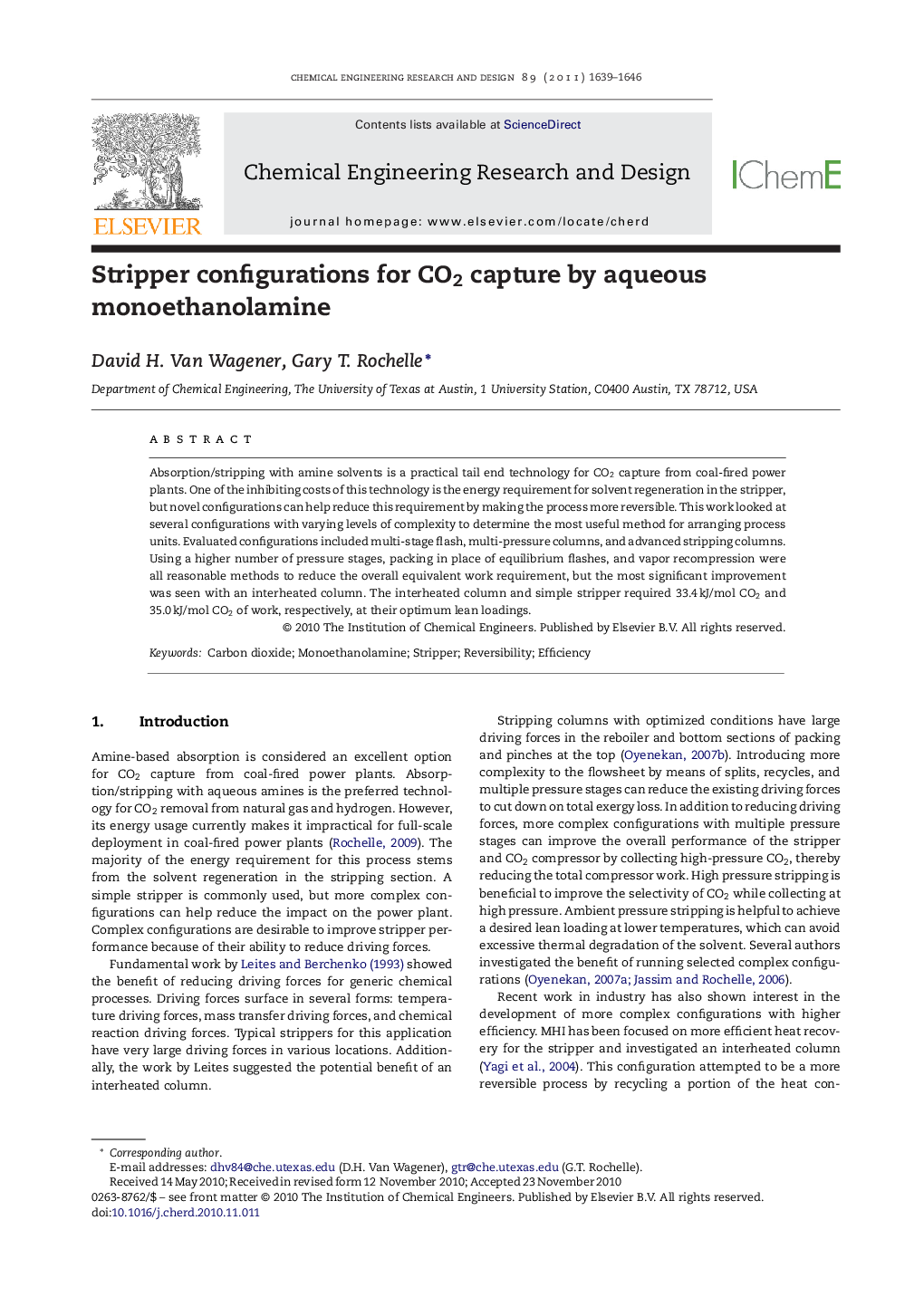| Article ID | Journal | Published Year | Pages | File Type |
|---|---|---|---|---|
| 622046 | Chemical Engineering Research and Design | 2011 | 8 Pages |
Absorption/stripping with amine solvents is a practical tail end technology for CO2 capture from coal-fired power plants. One of the inhibiting costs of this technology is the energy requirement for solvent regeneration in the stripper, but novel configurations can help reduce this requirement by making the process more reversible. This work looked at several configurations with varying levels of complexity to determine the most useful method for arranging process units. Evaluated configurations included multi-stage flash, multi-pressure columns, and advanced stripping columns. Using a higher number of pressure stages, packing in place of equilibrium flashes, and vapor recompression were all reasonable methods to reduce the overall equivalent work requirement, but the most significant improvement was seen with an interheated column. The interheated column and simple stripper required 33.4 kJ/mol CO2 and 35.0 kJ/mol CO2 of work, respectively, at their optimum lean loadings.
Research highlights▶ Increased stripper complexity improved overall efficiency by enhancing reversibility. ▶ Packing improved performance when running with high CO2 capacity. ▶ The simple stripper base case required 35 kJ/mol CO2 in equivalent work. ▶ Interheating yielded a lower optimum loading with lower equivalent work. ▶ An interheated column performed best with 33.4 kJ/mol CO2 required.
